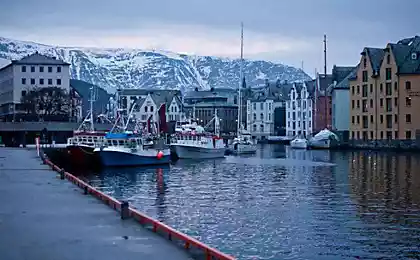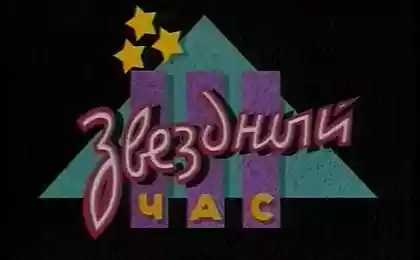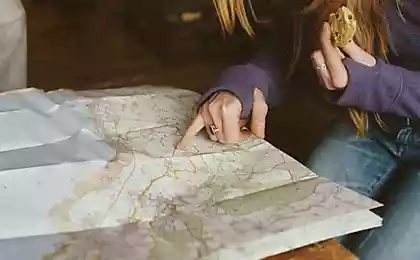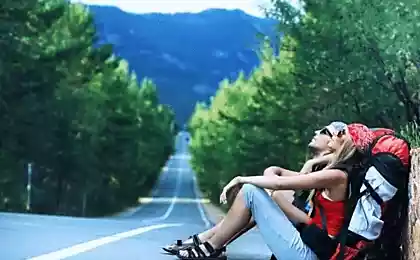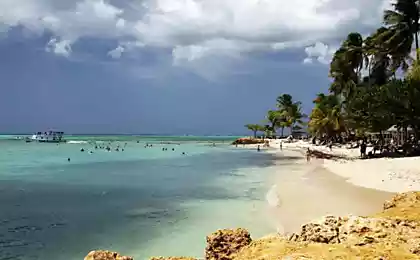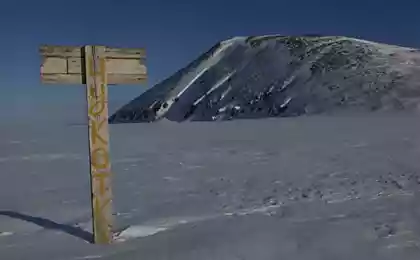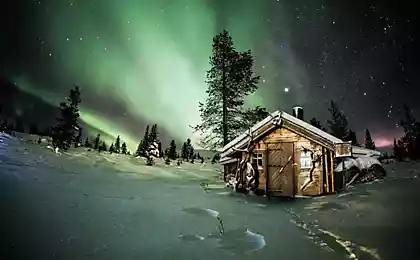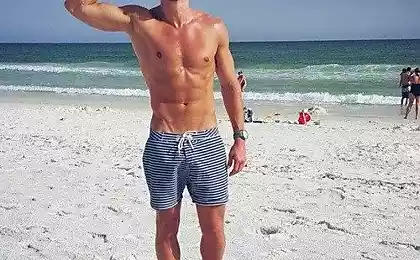1311
Tour of Scandinavia - Northern Europe by car. Part 2
Continued photo essay of a luxurious journey of the author in Norway and northern Europe. During the 29 days had to travel by car more than 15,000 kilometers!
On the last part of the story can be found here on the Belarusian European track completely equipped parking lots, resting places and now these cards. The Russian part of the route, from the Belarusian border to Moscow's worse, though, and stores one-way traffic, but the quality of the road and the speed limit immediately returns to the Russian reality.
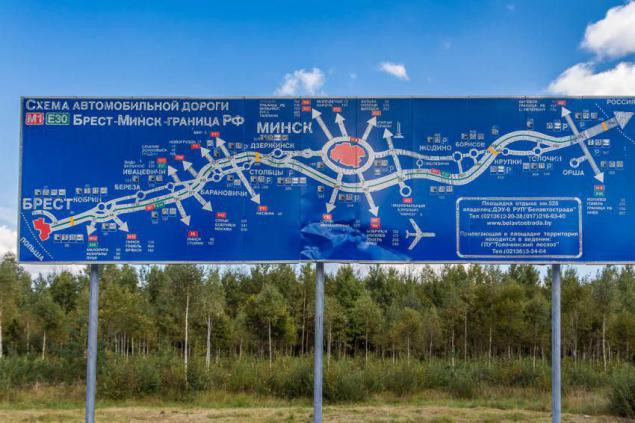
On the last day we drove a few hours here in these eerie conditions.
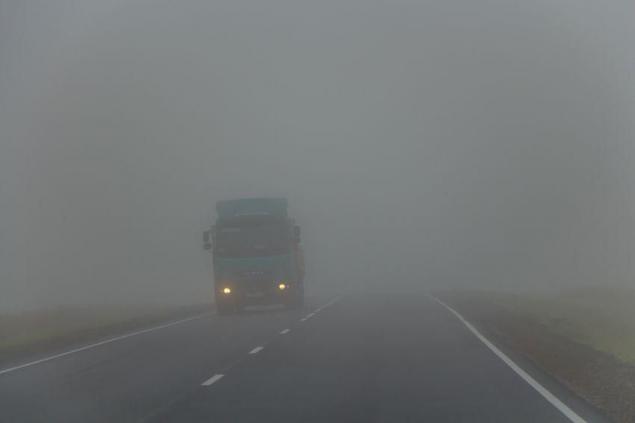
Go back to the Norwegian roads.
Analysts expedition discovered a startling manyachestvo in the construction of tunnels Norwegians.
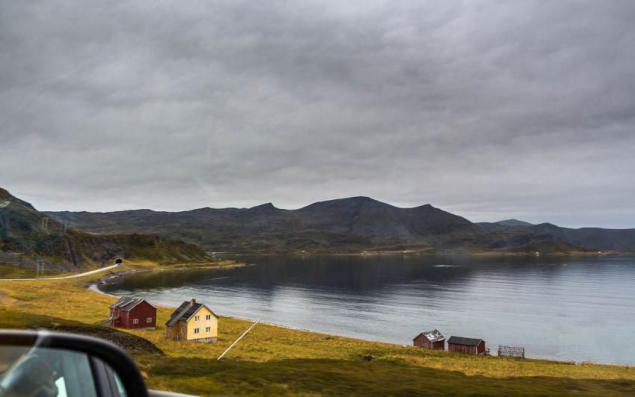
They pierce the mountains here with skill fabulous dwarves. We drove, if not hundreds, many dozens of tunnels.

And build them not only in the mountains, and under the seas. For example, the North Cape tunnel leading to the island, dug under the bottom of the Barents Sea. The length of almost 7 km and a depth of about 200 meters. On the map of the North Cape, at the beginning of the report, double-dotted line is drawn this underwater, more precisely, a pallet tunnel. And on the island there are a couple of non-small tunnels through the mountains. Cool island 20 by 30 km, several hundred residents of such complex structures! Similarly maniacs. We have these dwarves, metro pick ...
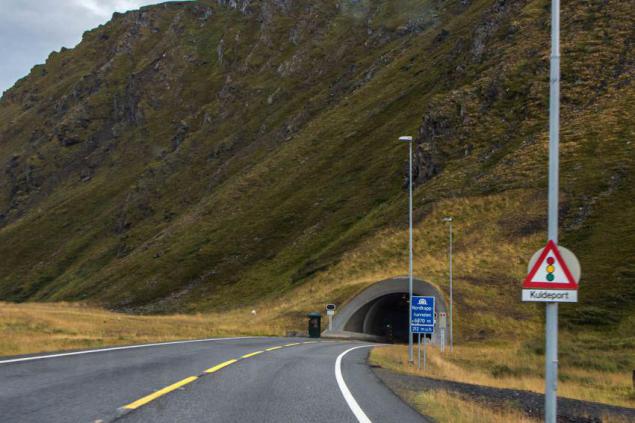
Entrances to tunnels sometimes look like a hole in the cave.
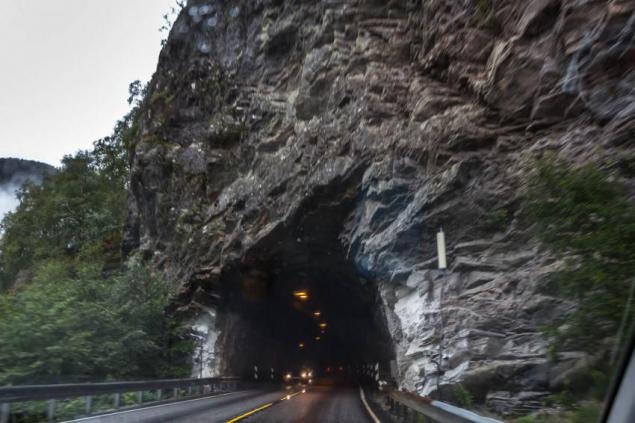
Yes, and how you go inside the cave. Not for the claustrophobic.
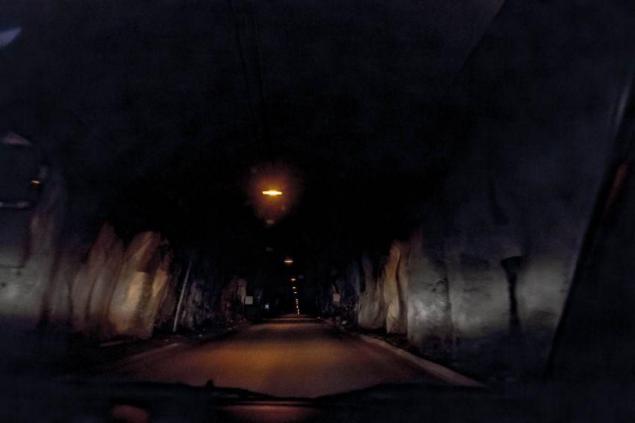
Profile of tunnels under the sea looks like this: \ /. Steep descent to 150-300 meters, when the car accelerates even in second gear, we have to slow down and lays his ears, then a steep climb, on which the machine can not accelerate quickly to 70-80 km / h at full throttle, and lays his ears.
And yet, the tunnels and in the horizontal plane is not straight! Okay vertically - round the sea, but they skirt the horizontal? It would seem to dig, so dig in a straight line, but the dwarves are not looking straight paths. And the tunnel under the mountains often wriggle like snakes. The longest tunnel is bound to have pockets and emergency call SOS.
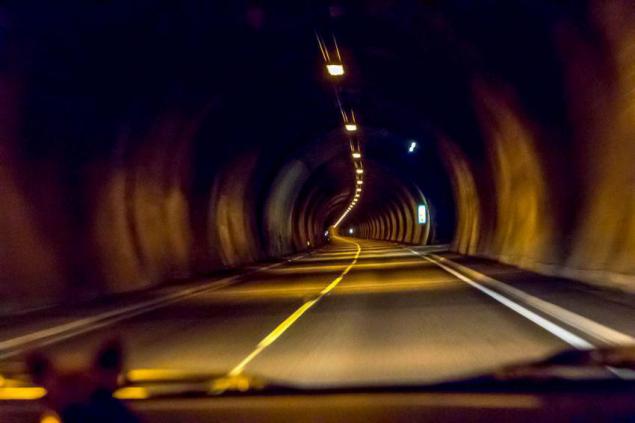
In general, the Norwegian tunnels we Hitting your fill, and one of the last the longest, a few tens of kilometers, we decided to go round the top. At the same time, and the fjord from the top looked and felt the snow. Relevant documents I have provided above.
But en route to the south of us, too, caught the tunnel. Under the Baltic Sea between Sweden and Denmark, 4 km long, called Drogden, part of the Oresund crossing.
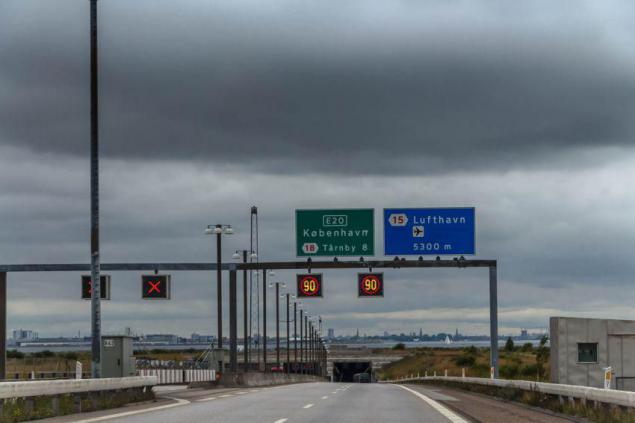
They dug it is clearly not the dwarves ... ennobled and strongly expanded division of transport in the opposite direction, which is not common in Norway.
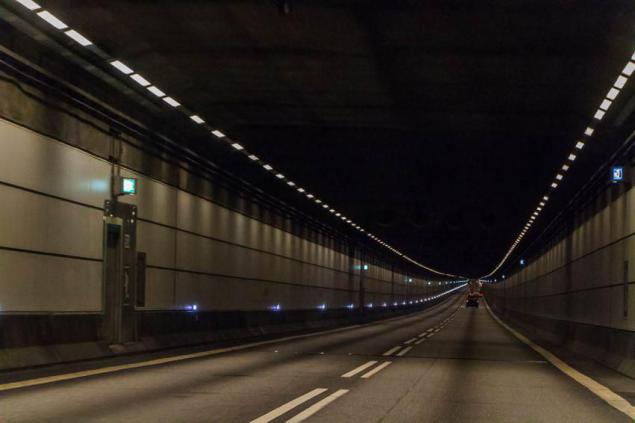
By the way, under Peter, we also drove a tunnel under the Gulf of Finland, the Ring Road in the area, going to Kronstadt, but small, about one kilometer long.
Bridges. Next attraction Norwegian roads.
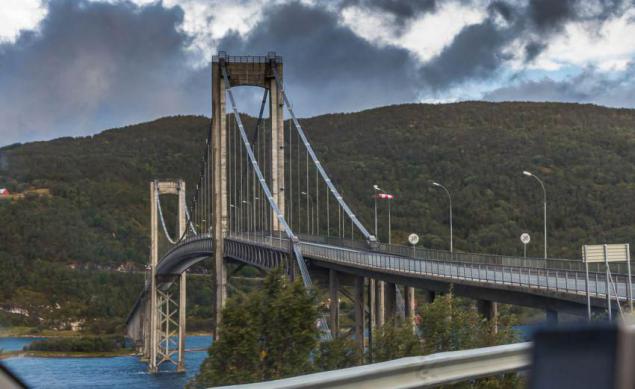
They are too numerous, extraordinary beauty and harmony with the surrounding terrain.
Henningsversky bridge on Lofoten is so narrow that cars drive through it with the queue and on the other hand, the traffic lights.

Another Lofoten bridge in Fredvang
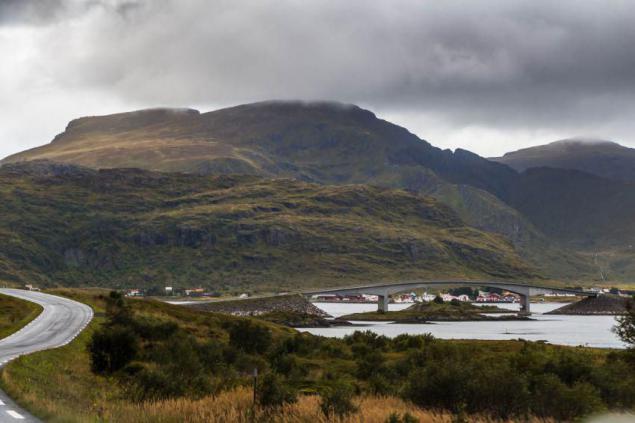
Salstraumensky Bridge.

It is not over the river and over the salstraumenskim tidal flow between the fjords. The course goes beyond the moon, then right, then left under the bridge. At the same time there arise periodically giant whirlpools. But we did not wait for them, only to see a lot of small vodovorotikov, a bunch of fish and birds, hunting for them.

Past another famous whirlpool, we sailed on the ferry. It is located a hundred kilometers from Saltstraumen, at the tip of Lofoten and is called Maelstrom. Immortalized by Edgar Allan Poe and Jules Verne. It is here that Professor Aronnaks escaped from Captain Nemo. We swam 3 kilometers from the maelstrom, it is visible that's where the rock ends and the light rays from the clouds. Huge water funnel to the bottom, with steep walls, as well as depict On.
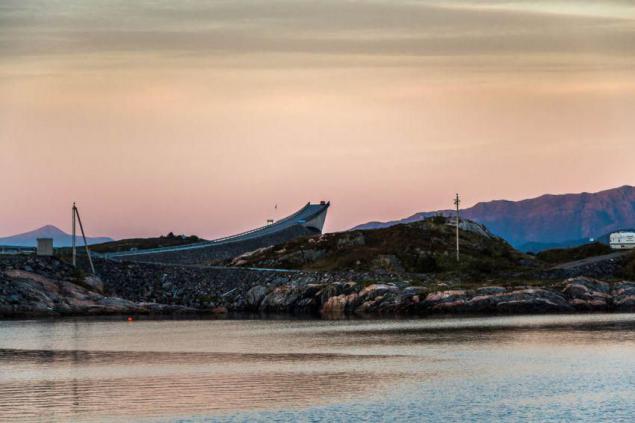
But we did not notice the whirlpool. I think this is due to the fact that Poe and Verne famous inventors.
Another Landmark - Storseisundet Bridge on the Atlantic Road. He also "drunk the bridge." It is very original. Car accelerates and jump to the other side as a springboard.
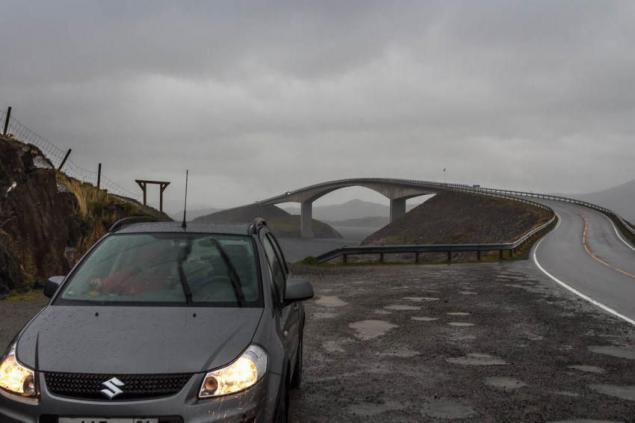
Approximately like that.
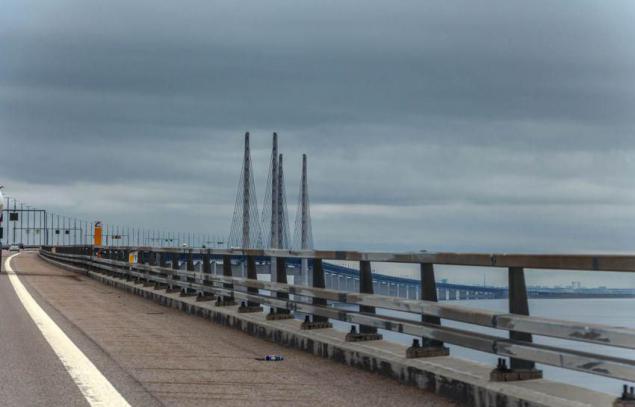
Although in reality it's just a beautiful curve of the bridge. Norwegian gnomes was a little curved tunnels, they gave the gift of curvature of the bridge builders. Maybe something hard watered creators, that's why the bridge called drunk.

Oresund Bridge. Length of almost 8 km, between Sweden and Denmark. Part of the Oresund crossing, which includes more Drogden tunnel under the sea, which I described just above.
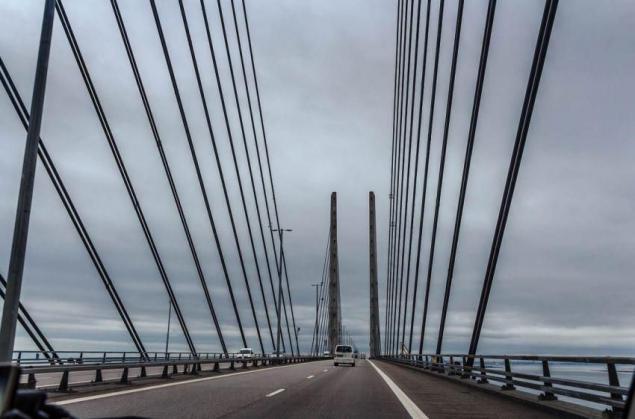
Passage through this crossing fee, 45 euros or 325 DKK.
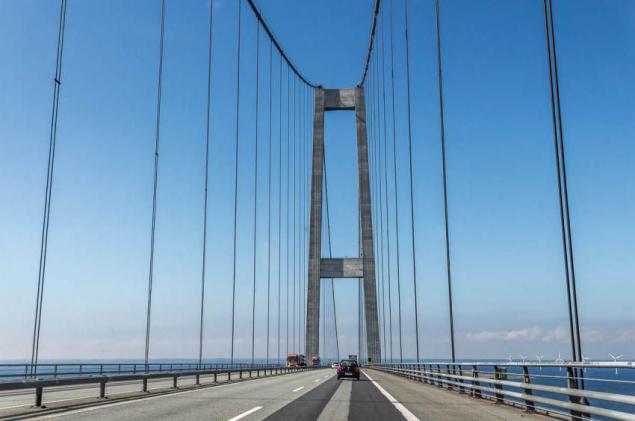
Built crossing for 5 years, and opened 13 years ago.
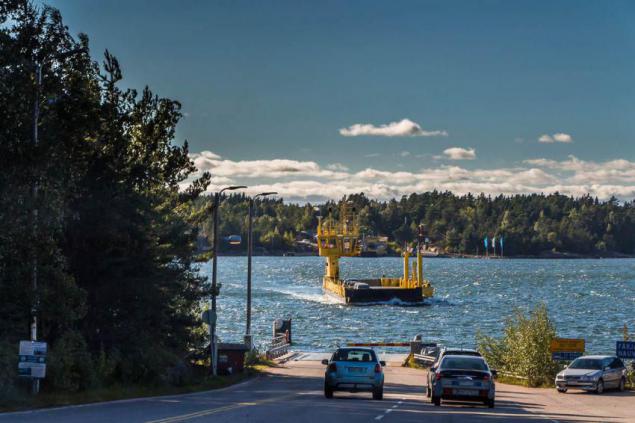
Another bridge, the Great Belt, located a hundred kilometers after crossing, in Denmark. It consists of several segments of the total length of 18 km. Directions also paid, 235 Danish kroner.
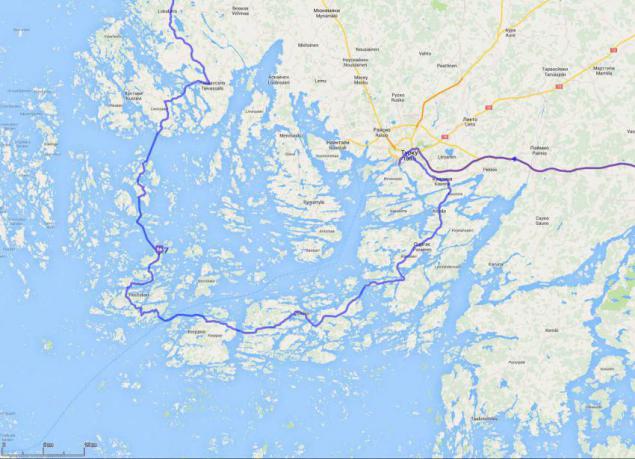
These bridges replaced ferries across the Baltic Sea.
But in many places the road bridge yet. In these places, we had to cross by ferry. Last year we got only one ferry. And in this we had to swim to fifteen.
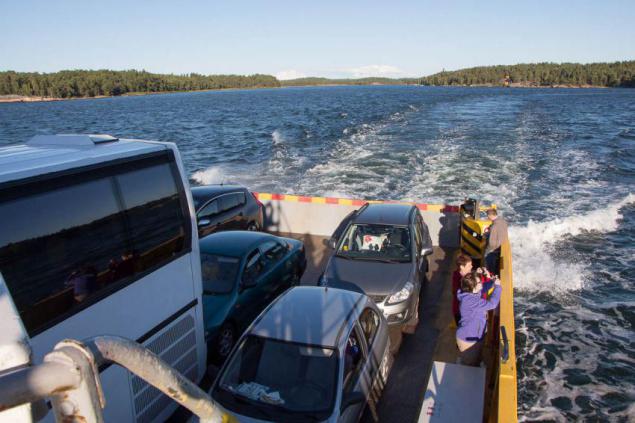
Of these, 8 pieces in Finland here on this archipelago of Turku.
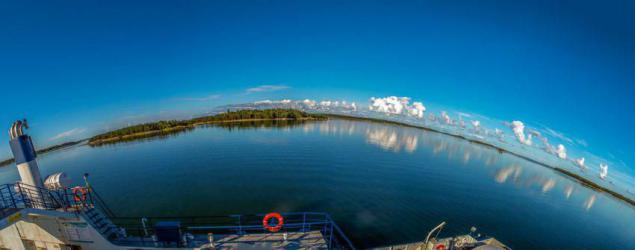
Interesting place, where tens of thousands of islands, and the Finns do not know their exact number. But we managed to combine the largest of them the road on which we drove. This alternate road bridges ferries. Moreover, both of them are free! Yes, ferries are considered part of the road and pay for them is not necessary. On the track, you will notice ferry stations, they are slightly different color.
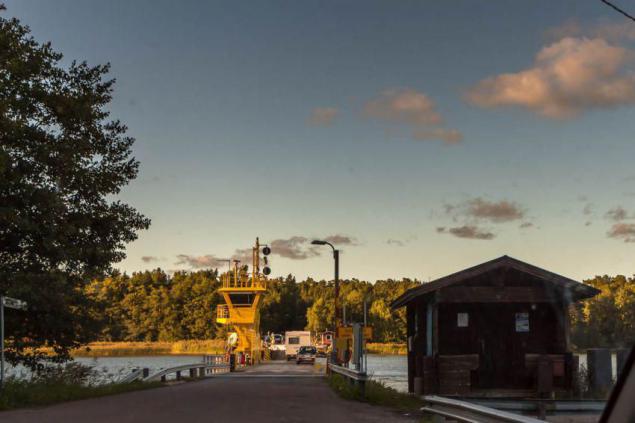
The longest section of a Finnish ferry - 13 km, a ferry sailed a little less than an hour.
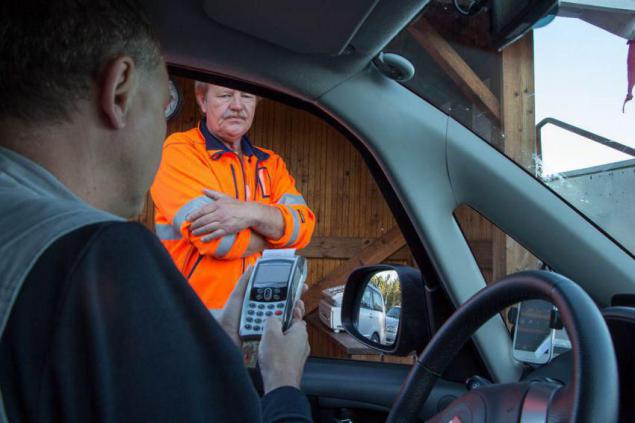
Shortest - m 50. Apparently, there is not time to build a bridge.
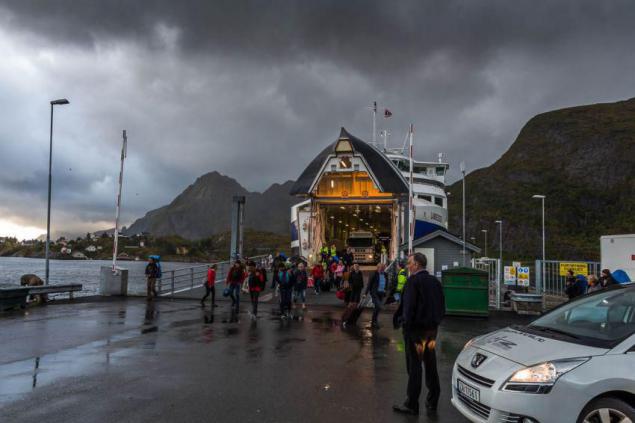
Accordingly, and ferries of various sizes, some intermeddle two or three cars, on the other - dozens of cars. There are ferries, where the ferry calling button.
One ferry, we got paid, on the island of Maussane, apparently, we are somewhere wrong turn, and everything was so cleverly designed. There had to spend the night at the camp, as the ferry was only the next morning.
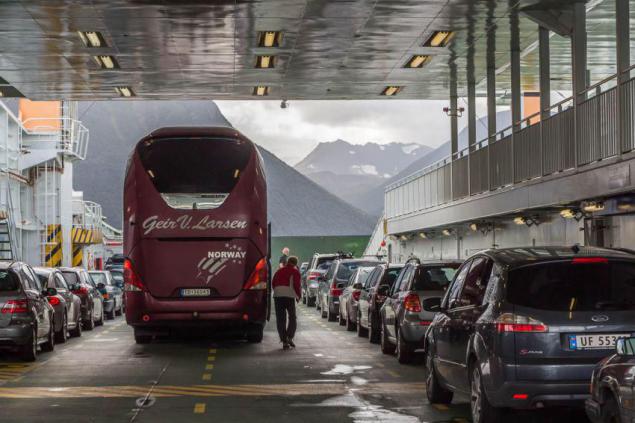
But in Norway had to pay anywhere. From 90 kroner (about 500 rubles) through small fjords to 800kron (4700rub) here for the ferry to the Lofoten Islands to the mainland. It sailed past the whirlpool of the Maelstrom of the above and on the mainland, 100 km to the sea, about 4 hours.
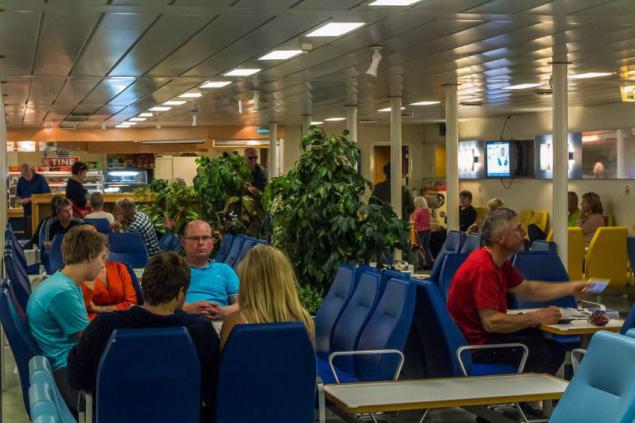
Norwegian ferry solid, multi
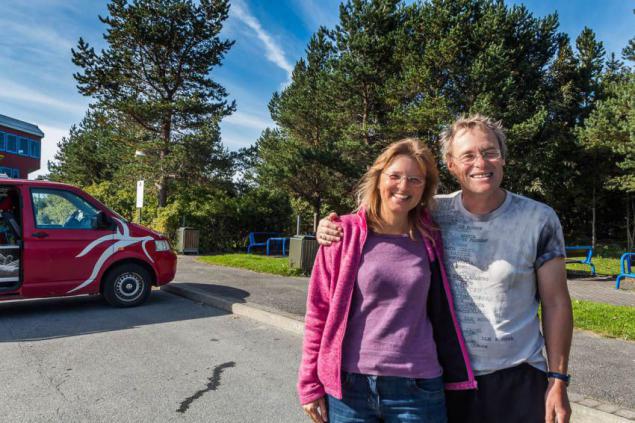
Inside the rooms are equipped with rest, refreshment, and almost all with free Internet access on board.
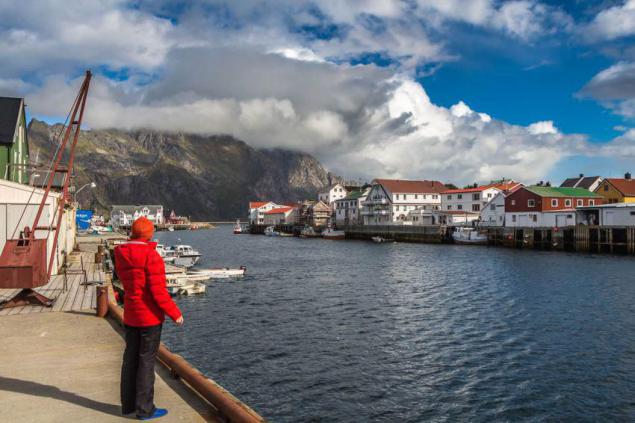
And before that, the longest ferry in Lofoten, when we were waiting for the ferry a few hours, met with cheerful German couple of travelers and, concurrently, the teachers from southern Bavaria. Later the road we suddenly has brought together and we communicated better. In his spare time, they travel render habitable house in Sweden and heroically volunteering in Egypt for Russian car Lada 2107.
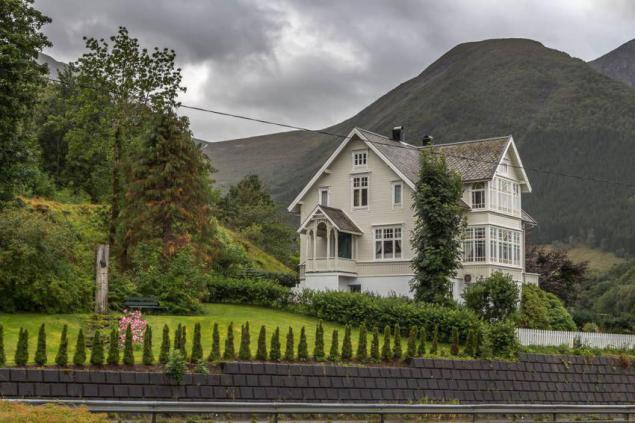
In Lofoten we have, of course, brought the famous fishing village Henningsvær, speckled with houses on stilts.

But in general the Norwegian architecture is laconic and austere.
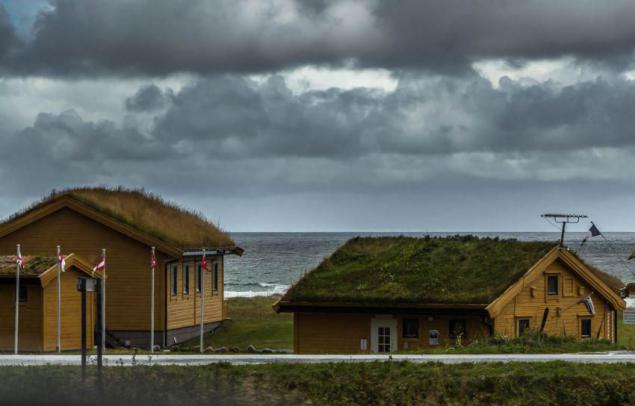
Due to the surrounding landscape.
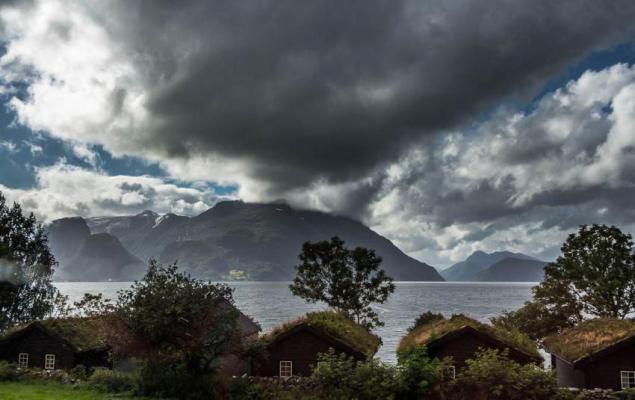
And in the northern part of Norway, the roof of the houses sprouted grass.
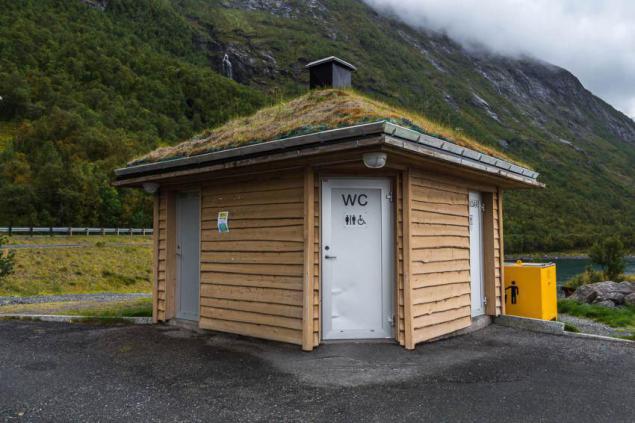
Probably because it is warmer.
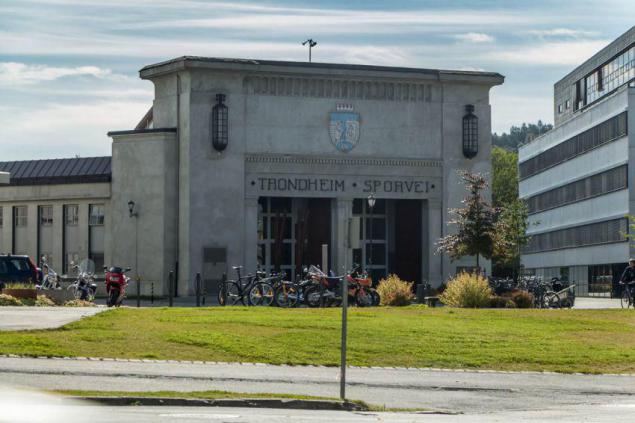
Even the toilets were not kept on parking, and arranged her hair on the roof.
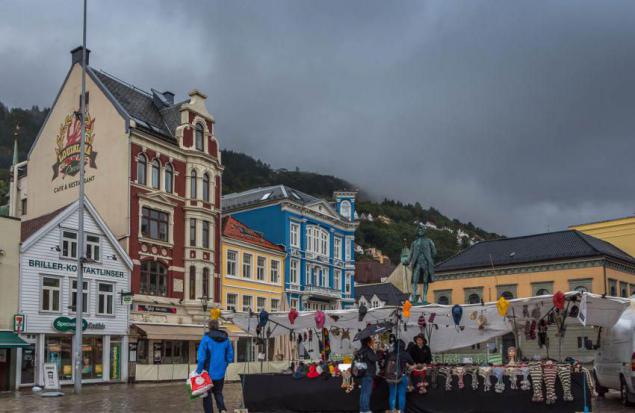
In architecture we have seen in some cities in Norway, which is not too lazy to call in on the way - in Trondheim,
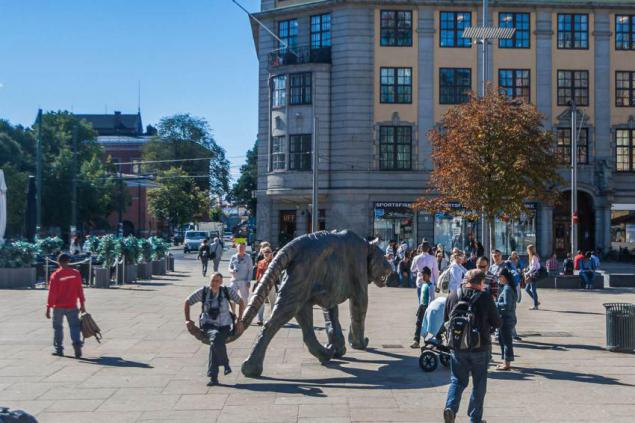
Bergen. The ancient capital of Norway.
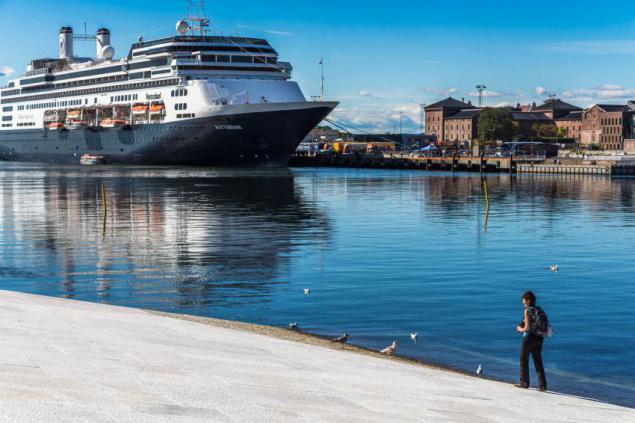
Oslo. The current capital. Its symbol - the tiger tail on which sit.

And next - the embankment on which the walk.
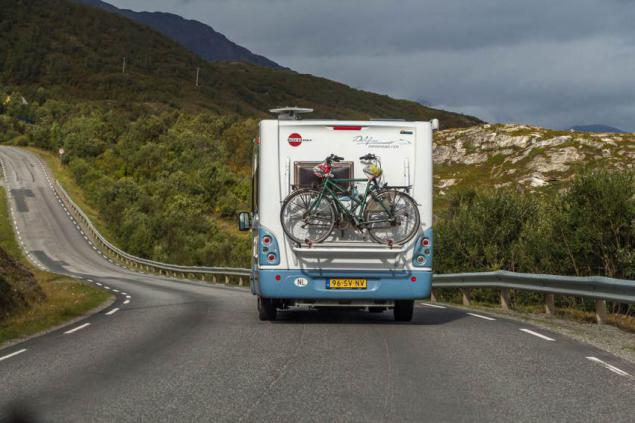
And the Opera House with panoramic views of the city
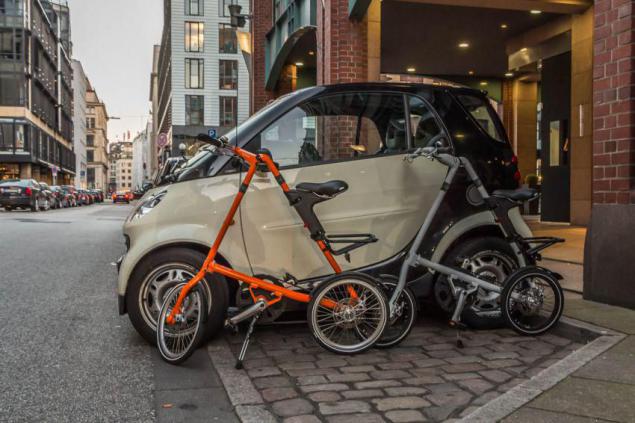
Last year's experience has shown that the most comfortable in Europe to travel in their campers, and bicycles that many met and do
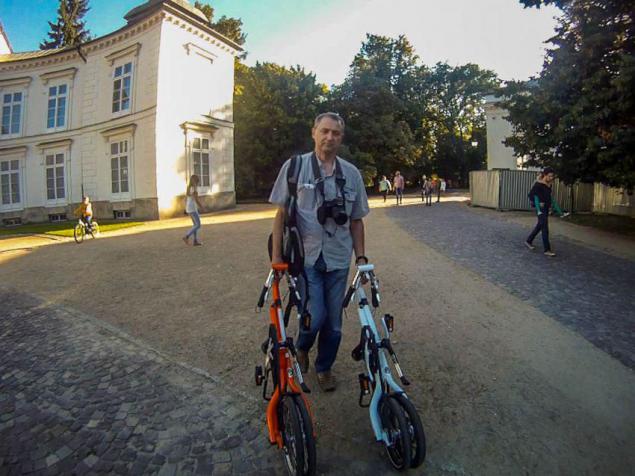
But the big motor homes we have, but without a bike to travel to European cities already do not want to. So we were looking for a compromise that would have greatly overloaded our little car. A compromise was found in St. Petersburg and looked like this:
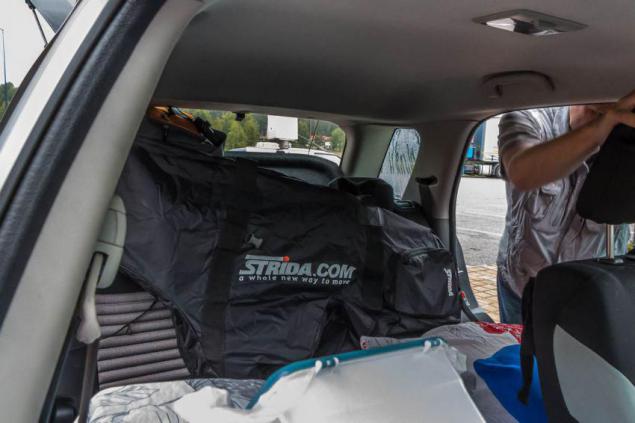
No, not a Mercedes Smart car, but the two triangles - the bike on the background.
They are called Strid, weigh less than 10 kg, are added to the carrying 10-20 seconds here in such compactness.
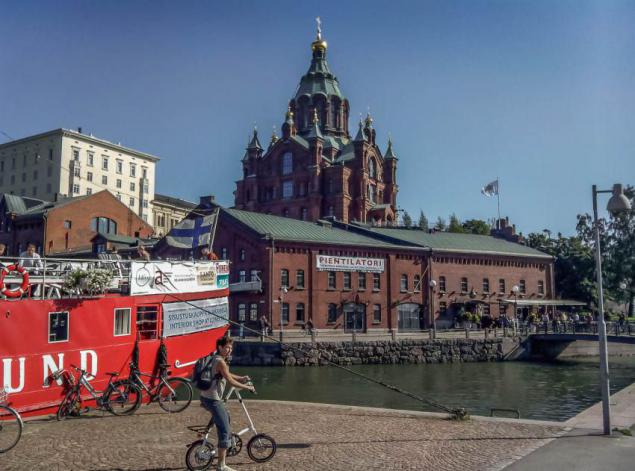
It fits into the case and in this state take up little space in the back seat.

In Helsinki, the Finnish capital, we first experienced them - quickly toured the entire facility. Cathedral of the Assumption.
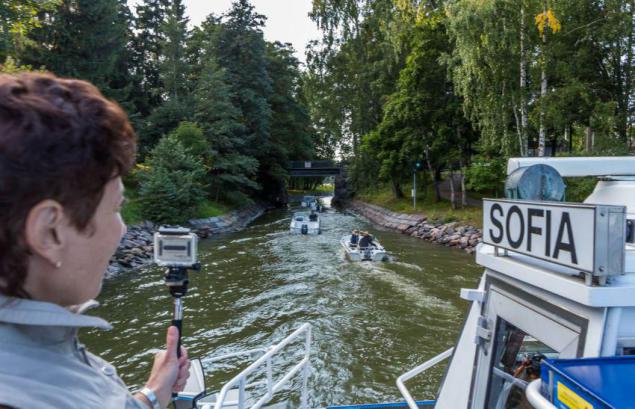
Senate Square with the statue of Russian Tsar Alexander II. As well as the cathedral - the legacy of Russia, which once belonged to Finland. But the Finns have fled in time and have left themselves an evil memory as in some Eastern European countries, forcing Russia to demolish monuments.
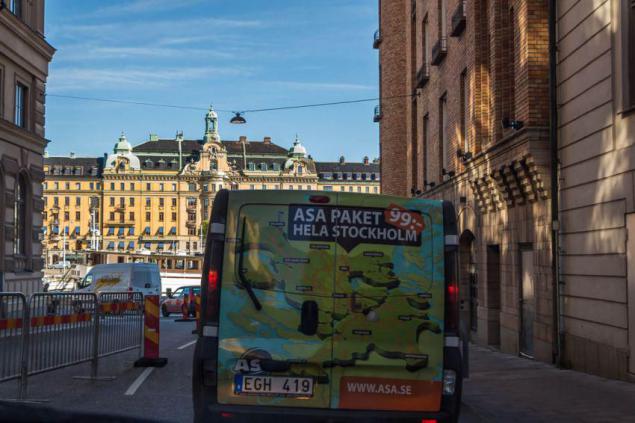
On reaching the seaport, we checked velosipedikov transportability in a small excursion ships. It turned out well, and we rode on the waters of Helsinki.
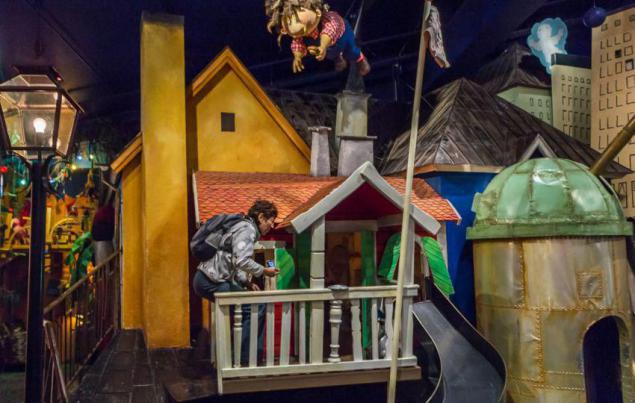
The Swedish capital, Stockholm, surprised stoppers. Protolklis them a couple of hours.
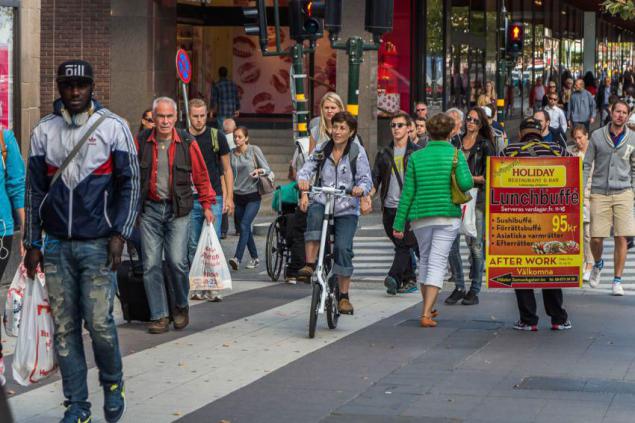
We visit the main attractions - house Carlson, who lives on the roof. Although Sweden is not particularly Carlson quoted, but paramotoristam expedition is a distant ancestor, and therefore pay homage.

Well, quickly toured the center.
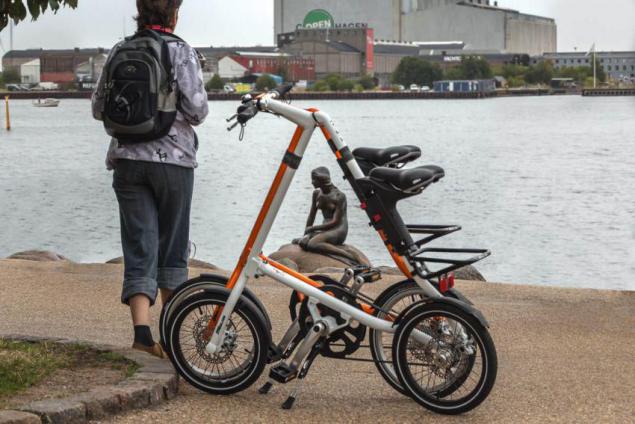
Copenhagen, capital of Denmark. Perhaps, like most of the visited cities. Very nice town with nice houses on the waterfront, where he lived Hans Christian Andersen.
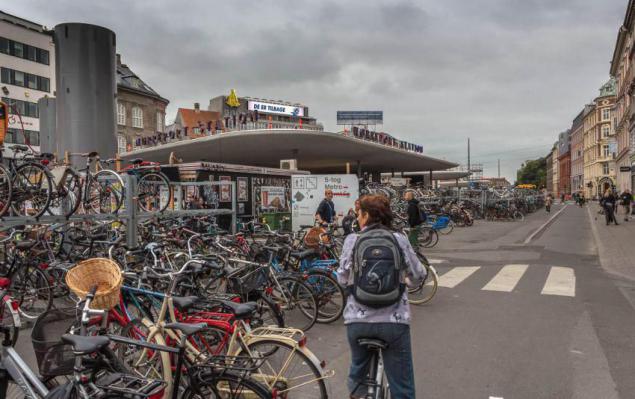
And he wrote the tale of the Little Mermaid, which is exactly 100 years ago came out here on a pretty stone symbol of Copenhagen.
--img56--
But most of all struck by the Copenhagen cycling. How it is organized, with its lanes, traffic lights, forks, bars, signs, parking. Here's a two-storey bicycle gigaparkovka was found somewhere near the metro station. Later, in Amsterdam, these things have looked a pale copy of Copenhagen.
To be continued.
--img57--
Source: alni.livejournal.com
On the last part of the story can be found here on the Belarusian European track completely equipped parking lots, resting places and now these cards. The Russian part of the route, from the Belarusian border to Moscow's worse, though, and stores one-way traffic, but the quality of the road and the speed limit immediately returns to the Russian reality.

On the last day we drove a few hours here in these eerie conditions.

Go back to the Norwegian roads.
Analysts expedition discovered a startling manyachestvo in the construction of tunnels Norwegians.

They pierce the mountains here with skill fabulous dwarves. We drove, if not hundreds, many dozens of tunnels.

And build them not only in the mountains, and under the seas. For example, the North Cape tunnel leading to the island, dug under the bottom of the Barents Sea. The length of almost 7 km and a depth of about 200 meters. On the map of the North Cape, at the beginning of the report, double-dotted line is drawn this underwater, more precisely, a pallet tunnel. And on the island there are a couple of non-small tunnels through the mountains. Cool island 20 by 30 km, several hundred residents of such complex structures! Similarly maniacs. We have these dwarves, metro pick ...

Entrances to tunnels sometimes look like a hole in the cave.

Yes, and how you go inside the cave. Not for the claustrophobic.

Profile of tunnels under the sea looks like this: \ /. Steep descent to 150-300 meters, when the car accelerates even in second gear, we have to slow down and lays his ears, then a steep climb, on which the machine can not accelerate quickly to 70-80 km / h at full throttle, and lays his ears.
And yet, the tunnels and in the horizontal plane is not straight! Okay vertically - round the sea, but they skirt the horizontal? It would seem to dig, so dig in a straight line, but the dwarves are not looking straight paths. And the tunnel under the mountains often wriggle like snakes. The longest tunnel is bound to have pockets and emergency call SOS.

In general, the Norwegian tunnels we Hitting your fill, and one of the last the longest, a few tens of kilometers, we decided to go round the top. At the same time, and the fjord from the top looked and felt the snow. Relevant documents I have provided above.
But en route to the south of us, too, caught the tunnel. Under the Baltic Sea between Sweden and Denmark, 4 km long, called Drogden, part of the Oresund crossing.

They dug it is clearly not the dwarves ... ennobled and strongly expanded division of transport in the opposite direction, which is not common in Norway.

By the way, under Peter, we also drove a tunnel under the Gulf of Finland, the Ring Road in the area, going to Kronstadt, but small, about one kilometer long.
Bridges. Next attraction Norwegian roads.

They are too numerous, extraordinary beauty and harmony with the surrounding terrain.
Henningsversky bridge on Lofoten is so narrow that cars drive through it with the queue and on the other hand, the traffic lights.

Another Lofoten bridge in Fredvang

Salstraumensky Bridge.

It is not over the river and over the salstraumenskim tidal flow between the fjords. The course goes beyond the moon, then right, then left under the bridge. At the same time there arise periodically giant whirlpools. But we did not wait for them, only to see a lot of small vodovorotikov, a bunch of fish and birds, hunting for them.

Past another famous whirlpool, we sailed on the ferry. It is located a hundred kilometers from Saltstraumen, at the tip of Lofoten and is called Maelstrom. Immortalized by Edgar Allan Poe and Jules Verne. It is here that Professor Aronnaks escaped from Captain Nemo. We swam 3 kilometers from the maelstrom, it is visible that's where the rock ends and the light rays from the clouds. Huge water funnel to the bottom, with steep walls, as well as depict On.

But we did not notice the whirlpool. I think this is due to the fact that Poe and Verne famous inventors.
Another Landmark - Storseisundet Bridge on the Atlantic Road. He also "drunk the bridge." It is very original. Car accelerates and jump to the other side as a springboard.

Approximately like that.

Although in reality it's just a beautiful curve of the bridge. Norwegian gnomes was a little curved tunnels, they gave the gift of curvature of the bridge builders. Maybe something hard watered creators, that's why the bridge called drunk.

Oresund Bridge. Length of almost 8 km, between Sweden and Denmark. Part of the Oresund crossing, which includes more Drogden tunnel under the sea, which I described just above.

Passage through this crossing fee, 45 euros or 325 DKK.

Built crossing for 5 years, and opened 13 years ago.

Another bridge, the Great Belt, located a hundred kilometers after crossing, in Denmark. It consists of several segments of the total length of 18 km. Directions also paid, 235 Danish kroner.

These bridges replaced ferries across the Baltic Sea.
But in many places the road bridge yet. In these places, we had to cross by ferry. Last year we got only one ferry. And in this we had to swim to fifteen.

Of these, 8 pieces in Finland here on this archipelago of Turku.

Interesting place, where tens of thousands of islands, and the Finns do not know their exact number. But we managed to combine the largest of them the road on which we drove. This alternate road bridges ferries. Moreover, both of them are free! Yes, ferries are considered part of the road and pay for them is not necessary. On the track, you will notice ferry stations, they are slightly different color.

The longest section of a Finnish ferry - 13 km, a ferry sailed a little less than an hour.

Shortest - m 50. Apparently, there is not time to build a bridge.

Accordingly, and ferries of various sizes, some intermeddle two or three cars, on the other - dozens of cars. There are ferries, where the ferry calling button.
One ferry, we got paid, on the island of Maussane, apparently, we are somewhere wrong turn, and everything was so cleverly designed. There had to spend the night at the camp, as the ferry was only the next morning.

But in Norway had to pay anywhere. From 90 kroner (about 500 rubles) through small fjords to 800kron (4700rub) here for the ferry to the Lofoten Islands to the mainland. It sailed past the whirlpool of the Maelstrom of the above and on the mainland, 100 km to the sea, about 4 hours.

Norwegian ferry solid, multi

Inside the rooms are equipped with rest, refreshment, and almost all with free Internet access on board.

And before that, the longest ferry in Lofoten, when we were waiting for the ferry a few hours, met with cheerful German couple of travelers and, concurrently, the teachers from southern Bavaria. Later the road we suddenly has brought together and we communicated better. In his spare time, they travel render habitable house in Sweden and heroically volunteering in Egypt for Russian car Lada 2107.

In Lofoten we have, of course, brought the famous fishing village Henningsvær, speckled with houses on stilts.

But in general the Norwegian architecture is laconic and austere.

Due to the surrounding landscape.

And in the northern part of Norway, the roof of the houses sprouted grass.

Probably because it is warmer.

Even the toilets were not kept on parking, and arranged her hair on the roof.

In architecture we have seen in some cities in Norway, which is not too lazy to call in on the way - in Trondheim,

Bergen. The ancient capital of Norway.

Oslo. The current capital. Its symbol - the tiger tail on which sit.

And next - the embankment on which the walk.

And the Opera House with panoramic views of the city

Last year's experience has shown that the most comfortable in Europe to travel in their campers, and bicycles that many met and do

But the big motor homes we have, but without a bike to travel to European cities already do not want to. So we were looking for a compromise that would have greatly overloaded our little car. A compromise was found in St. Petersburg and looked like this:

No, not a Mercedes Smart car, but the two triangles - the bike on the background.
They are called Strid, weigh less than 10 kg, are added to the carrying 10-20 seconds here in such compactness.

It fits into the case and in this state take up little space in the back seat.

In Helsinki, the Finnish capital, we first experienced them - quickly toured the entire facility. Cathedral of the Assumption.

Senate Square with the statue of Russian Tsar Alexander II. As well as the cathedral - the legacy of Russia, which once belonged to Finland. But the Finns have fled in time and have left themselves an evil memory as in some Eastern European countries, forcing Russia to demolish monuments.

On reaching the seaport, we checked velosipedikov transportability in a small excursion ships. It turned out well, and we rode on the waters of Helsinki.

The Swedish capital, Stockholm, surprised stoppers. Protolklis them a couple of hours.

We visit the main attractions - house Carlson, who lives on the roof. Although Sweden is not particularly Carlson quoted, but paramotoristam expedition is a distant ancestor, and therefore pay homage.

Well, quickly toured the center.

Copenhagen, capital of Denmark. Perhaps, like most of the visited cities. Very nice town with nice houses on the waterfront, where he lived Hans Christian Andersen.

And he wrote the tale of the Little Mermaid, which is exactly 100 years ago came out here on a pretty stone symbol of Copenhagen.
--img56--
But most of all struck by the Copenhagen cycling. How it is organized, with its lanes, traffic lights, forks, bars, signs, parking. Here's a two-storey bicycle gigaparkovka was found somewhere near the metro station. Later, in Amsterdam, these things have looked a pale copy of Copenhagen.
To be continued.
--img57--
Source: alni.livejournal.com



